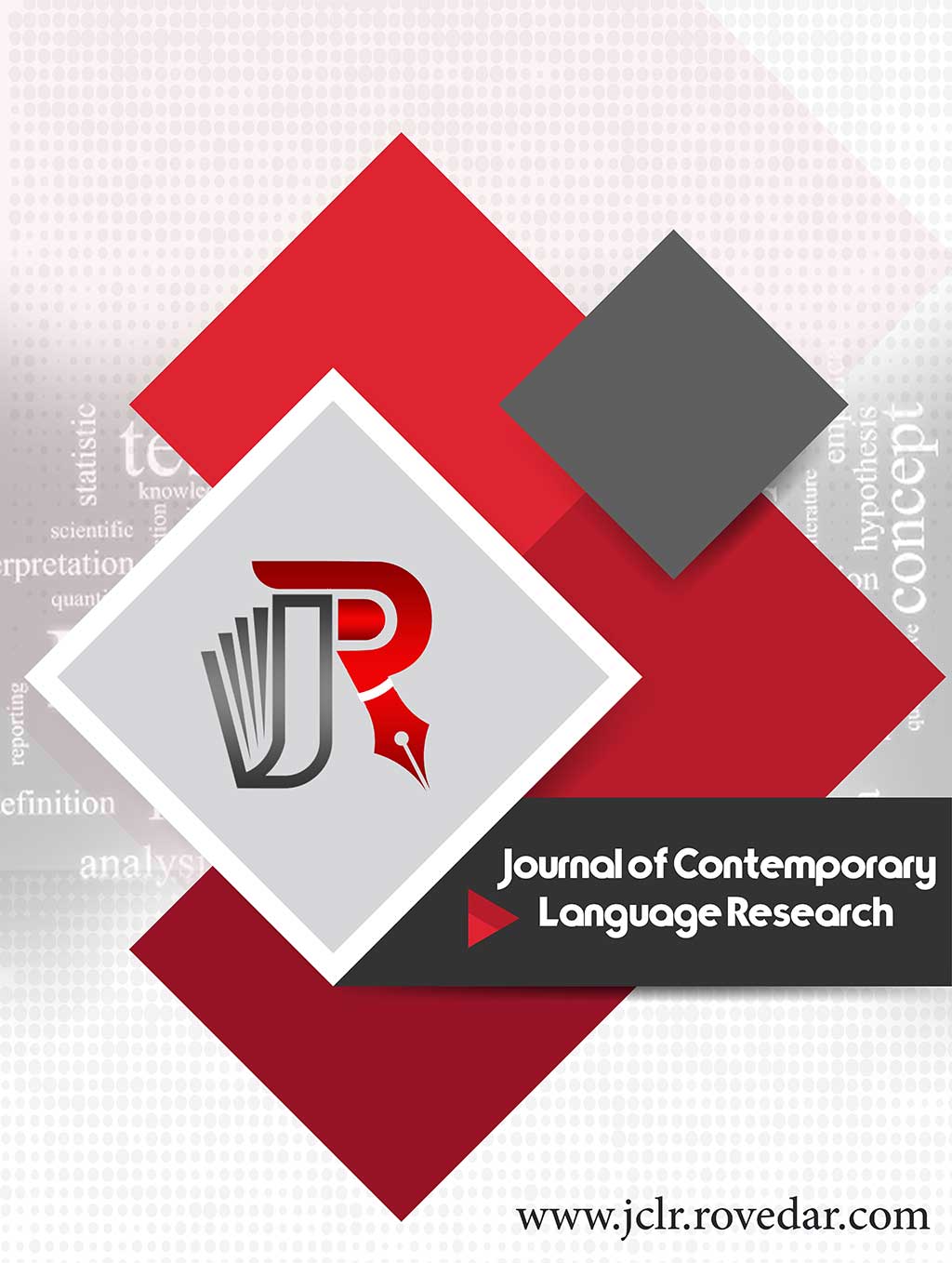From Functionalism to Language Development: A Comparison of FCE and Summit Books
Main Article Content
Abstract
Introduction: This paper aimed to analyze FCE and Summit books which are among popular English language teaching textbooks. In particular, this study was an attempt toward the objective analysis of reading passages by finding the differences and similarities of the books in terms of their processes.
Methodology: To conduct the study, a corpus of 1964 clauses from reading passages of the two books named Ready for First Certificate of English FCE and Summit was formed, classified, and coded. The corpus was then analyzed based on Halliday and Mattheisen’ (2004) transitivity system.
Results: The findings of the study revealed that there were significant differences between Summit and FCE books in terms of relational, existential, and verbal processes.
Conclusion: The findings of this study suggest that analyzing the schemas of the texts not only reveals the mindsets of their authors, but also can be an objective method for better understanding of a text The results were also discussed from an educational perspective, and suggestions were made for future research.
Article Details

This work is licensed under a Creative Commons Attribution 4.0 International License.
References
Altman, G. T. M., Garnham, A., & Dennis, Y. (1992). Avoiding the garden path: Eye movement in context. Journal of Memory and Language, 31(5), 685-712. https://doi.org/10.1016/0749-596X(92)90035-V
Austin, J. L. (1976). How to do things with words (2nd ed.).
Oxford University Press. https://pure.mpg.de/rest/items/item_2271128_6/component/file_2271430/content
Blom, E., & Baayen, H. (2013). The impact of verb form, sentence position, home language, and second language proficiency on subject–verb agreement in child second language Dutch. Applied Psycholinguistics, 34(4), 777-881. https://doi.org/10.1017/S0142716412000021
Bloor, T. & Bloor, M. (2004). The functional analysis of English (2nd ed.). Arnold.
Bright, W. (1992). International encyclopedia of linguistics. Psychology, 9, 151. https://doi.org/10.1075/sl.16.2.23got
Coffin, C. (2001). Theoretical approaches to written language – a TESOL perspective. In A. Burns & C. Coffin (Eds.), Analysing English in a global context (pp. 93-122). Routledge. Available at: https://www.routledge.com/Analyzing-English-in-a-Global-Context-A-Reader/Burns-Coffin/p/book/9780415241168
Cunningsworth, A. (1995). Choosing your coursebook. Heinemann Publishers.
Druks, J. (2002). Verbs and nouns- a review of literature. Journal of Neurolinguistics, 15(3-5), 289-315. https://doi.org/10.1016/S0911-6044(01)00029-X
Eggins, S. (2004). Introduction to systemic functional linguistics (2nd ed.). Pinter Publication. https://repository. dinus.ac.id/docs/ajar/An_Introduction_to_SFL_2nd_edition_Suzanne_Eggins.pdf
Fadanelli, S. B. (2022). Systemic-Functional Grammar and Teaching English as a Foreign Language: an analysis of three realizations of the recipe genre and a reflection on pedagogical applications. Matraga-Revista do Programa de Pós-Graduação em Letras da UERJ, 29(56), 285-302. https://doi.org/10.12957/matraga.2022.63843
Ferretti, T. R., McRae, K., & Hatherell, A. (2001). Integrating verbs, situation schemas and thematic role concepts. Journal of Memory and Language, 44(4), 516-547. https://doi.org/10.1006/jmla.2000.2728
Halliday, M.A.K. (1967). Notes on transitivity and theme in English, Journal of Linguistics, 3(1), 37-87. https://doi.org/10.1017/
Halliday, M.A.K. (1971). Linguistic function and literary style: An inquiry into the language of William Golding’s the inheritors. In
D. C. Freeman (ed.), Essays in modern stylistics (pp. 325-360). Methuen.
Halliday, M.A.K. (1985). An introduction to functional grammar (1st ed.). Edward Arnold.
Halliday, M.A.K., & Matthiessen, C. (2004). An introduction to functional grammar (3rd ed.). Edward Arnold. https://www.wizdom.ai/publication/10.4324/9780203783771/title/an_introduction_to_functional_grammar
Halliday, M. A. K., & Matthiessen, C. M. I. M. (1999). Construing experience through meaning: A language-based approach to
cognition. Continuum. https://arkitecturadellenguaje.files.wordpress
.com/2012/11/construing-experience-through-meaning.pdf
Holly, D. (1990). The unspoken curriculum, or how language teaching carries cultural and ideological messages. In B. Harrison (Ed.), Culture and the language classroom (pp. 11-19). Modern
English Publications and the British Council. https://www.teachingenglish.org.uk/sites/teacheng/files/pub_F044%20ELT-31%20Culture%20and%20the%20Classroom_v3.pdf
Iddings, J. G. (2007). Functional analysis of English humanities and biochemistry writing with respect to teaching university composition, Novitas-ROYAL, 2(1), 60-87. https://b2n.ir/p02798
Iddings, J., & Oliveria L. C. (2011). Applying the genre analysis of a narrative to the teaching of English language learners. INTESOL Journal,
(1), 25-41. https://journals.iupui.edu/index.php/intesol/ article/view/15522/15568
Khodadady, E. (2017). Microstructural translation of Al-Baqara (Q. 2): A novel glimpse at its linguistic and ideological structure. Journal of Applied Linguistics and Language Research, 4(4), 98-118. http://jallr.com/~jallrir/index.php/JALLR/article/view/596
Khodadady, E., & Khosravani, H. (2014). Ideology in the BBC and press TV’s coverage of Syria unrest: A schema-based approach. Review of Journalism and Mass communication, 2(1), 47-67. http://rjmcnet.com/journals/rjmc/Vol_2_No_1_June_2014/4.pdf
Khodadady, E., & Lagzian, M. (2013). Textual analysis of an English dentistry textbook and its Persian translation: A schema-based approach. Journal of Studies in Social Sciences, 2(1), 81-104. https://infinitypress.info/index.php/jsss/article/view/38
Li, J. (2016). The transmission of cultural values via EFL textbooks in China. Journal of Educational Media, Memory, and Society, 8(2), 128-144. http://doi.org/10.3167/jemms.2016.080207
McLean, S. (2011). Writing for success. Flat World Knowledge.
Olson, M. (2005). An analysis of presidential radio addresses [unpublished master’s thesis]. University of Texas.
Richards, J. C. (2001). The role of textbooks in a language
program. https://www.professorjackrichards.com/wp-content/uploads/role-of-textbooks.pdf
Tanenhaus, M. K., Spivey-Knowlton, M., Eberhard, K., & Sedivy, J. (1995). Integration of visual and linguistic information during spoken language comprehension. Science, 268(5217), 1632-1634. http://doi.org/10.1126/science.7777863
Teo, P. (2000). Racism in the news: A critical discourse analysis of news reporting in two Australian newspapers. Discourse & Society, 11(1), 7-49. https://doi.org/10.1177/0957926500011001002
Thompson, G. (2004). Introducing functional grammar (2nd ed.). Arnold.
Toms, C. (2004). General English course books and their place in an ESAP programme, The Asian EFL Journal, 6(1), 9.
Wang, L. (2007). Theme and rheme in the thematic organization of text: Implications for teaching academic writing. The Asian
EFL Journal, 9(1), 164-176. http://asian-efl-journal.com/March_2007_EBook.pdf
Xiang, Q. (2022). Transitivity Analysis of Joe Biden’s Inaugural Address From the Perspective of Systemic Functional Grammar. Theory and Practice in Language Studies, 12(1), 165-169. https://doi.org/10.17507/tpls.1201.20

